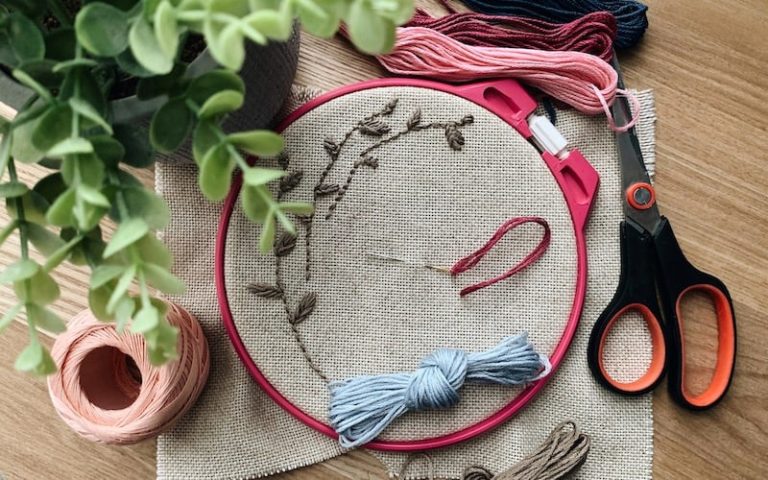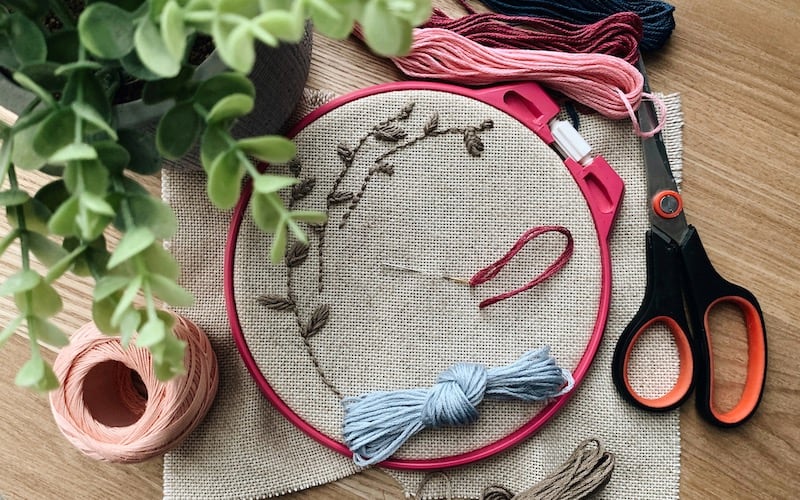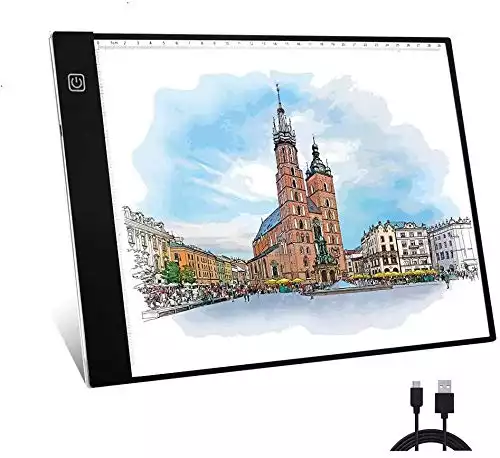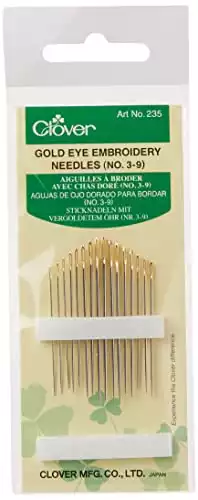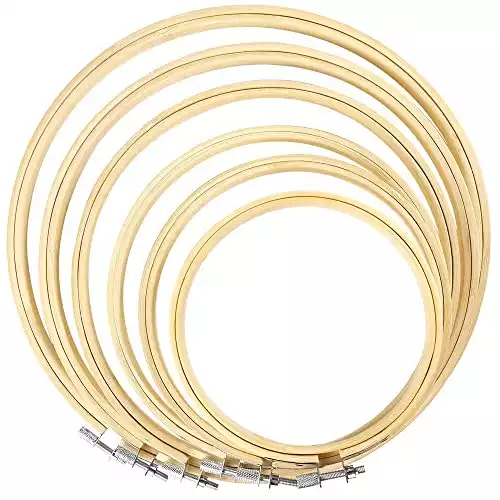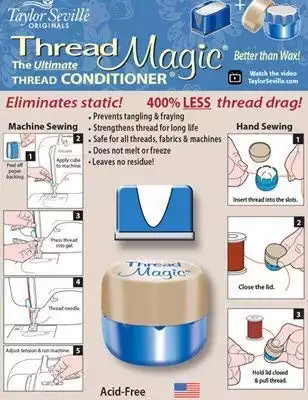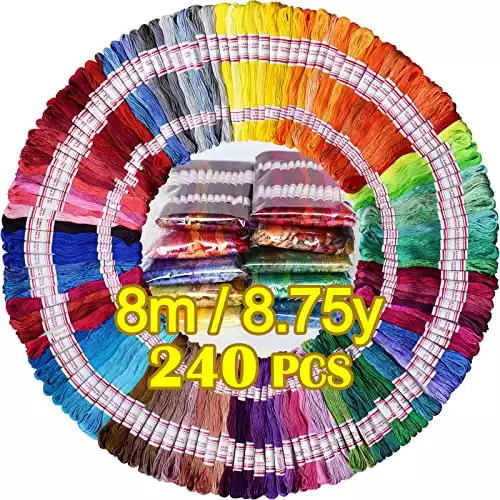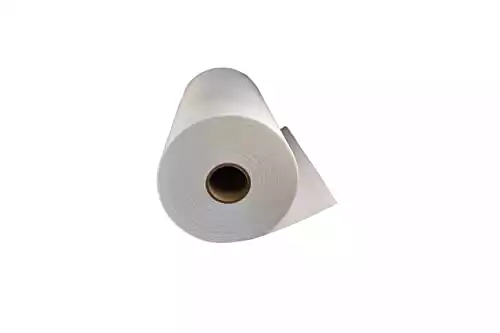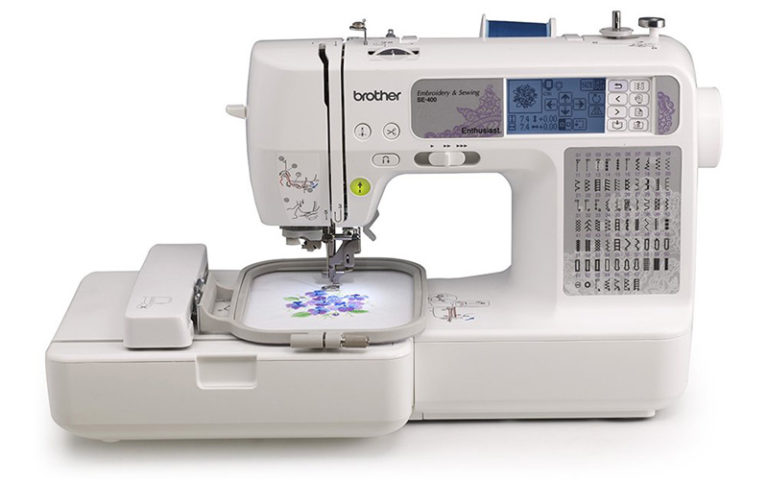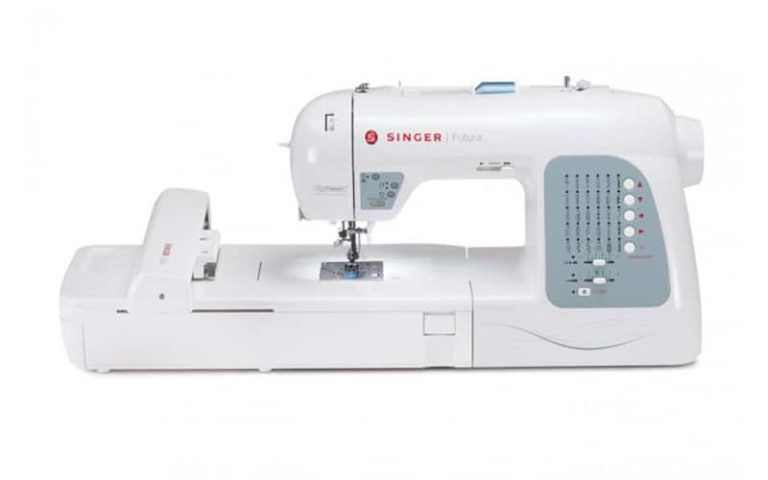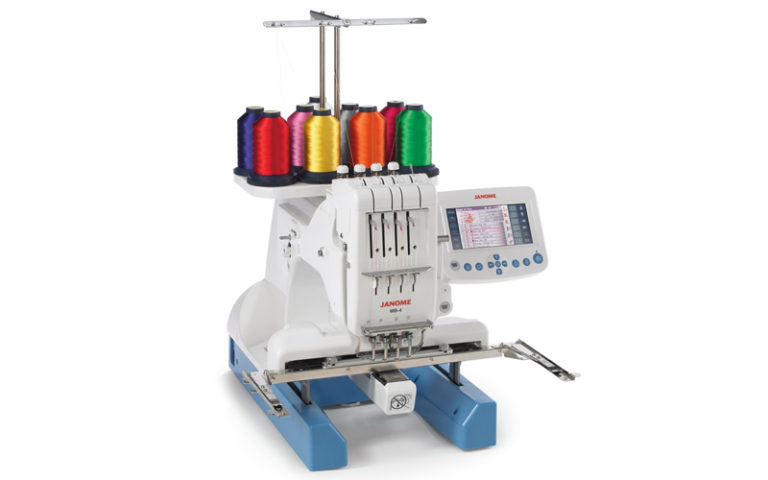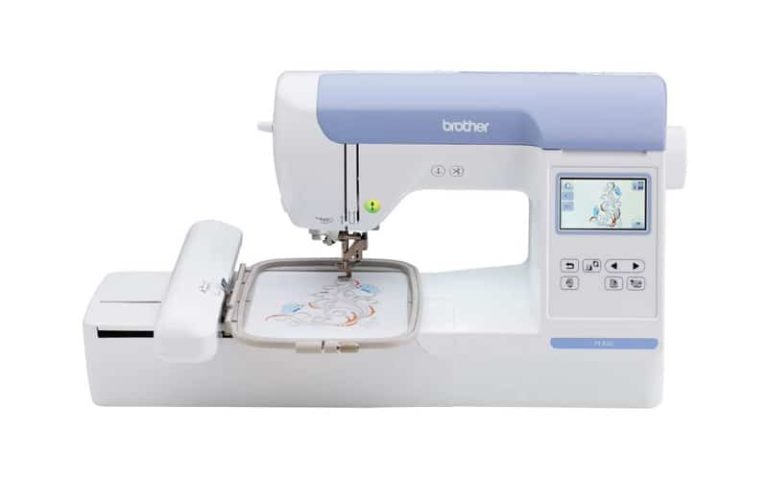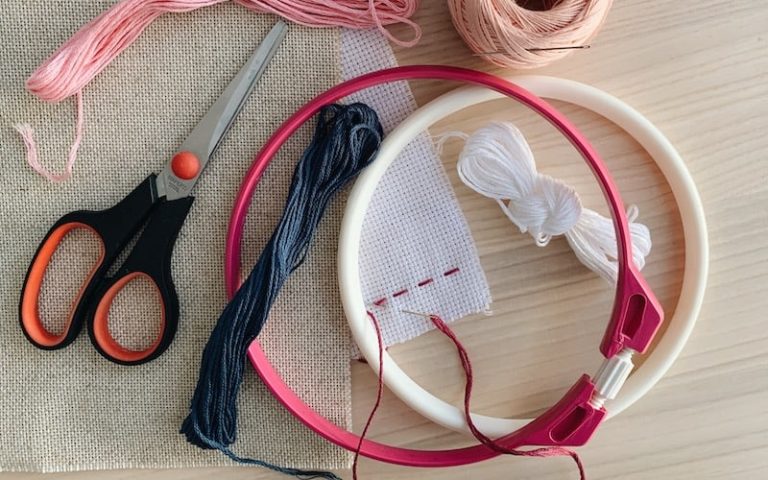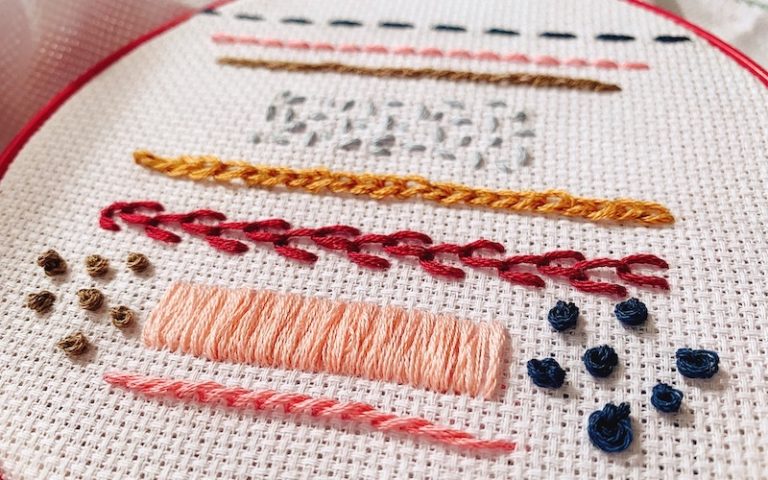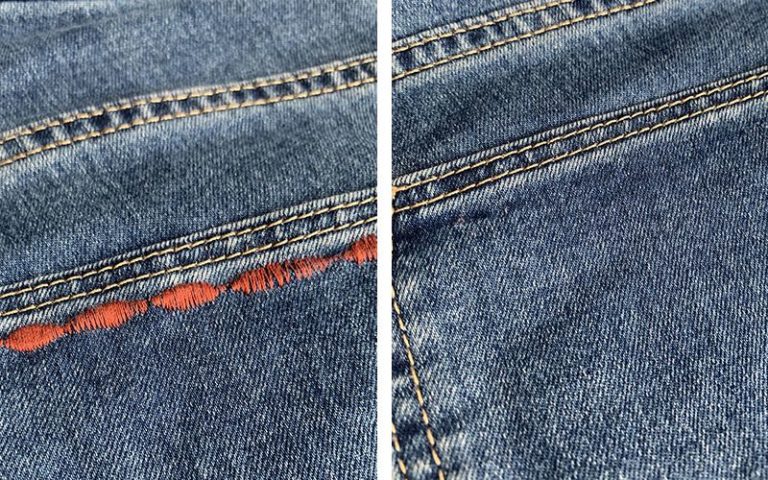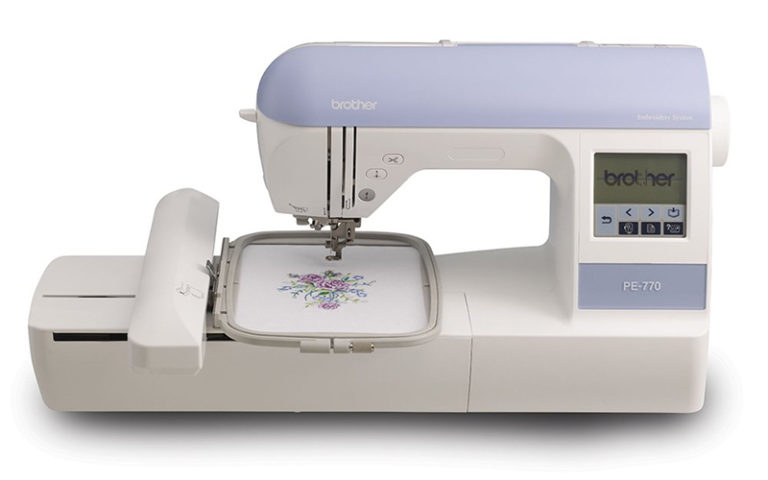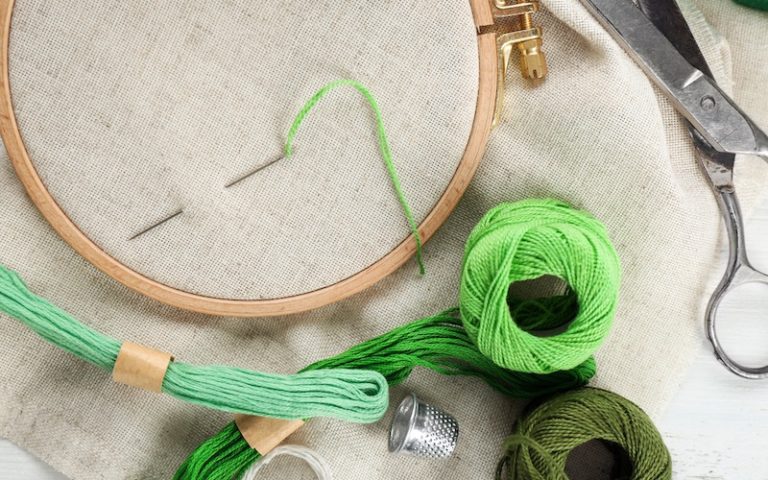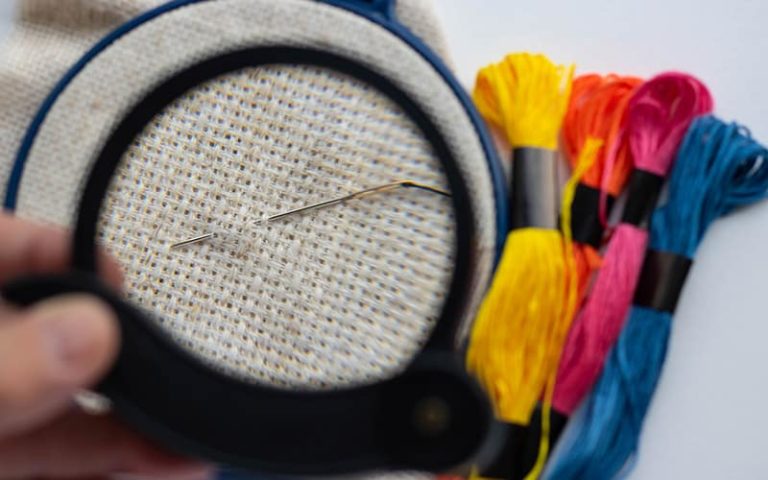Embroidery is a fantastic art form that allows you to create stunning designs and pictures with stitches. It is relatively easy to get started with embroidery, as long as you have some basic knowledge, and keep a few key things in mind.
Top embroidery tips
We’ve put together a list of the essential tips that new embroiders should know. This advice is aimed mostly at beginners but some of these tips will be beneficial to even the most seasoned embroiderers.
1. Use a lightbox to transfer a design
When you are sewing embroidery, unless you are planning on sewing your design free hand, you need to first transfer your design onto the fabric somehow. You can then easily embroider over the design for a flawless result.
There are a number of ways you can transfer your design onto your fabric, but one of the simplest and most effective methods is to use a light box. Light boxes are most commonly used for tracing drawing, stencils, and calligraphy on to paper, but work equally well with fabric.
Light boxes have been around for decades. Modern models are sleek, light and portable and have features such as adjustable LED lights and USB charging.
To trace your design, simply lay your stencil followed by your fabric on top of the light box. Once you turn on the light box, you will easily be able to see the design shining through the back of your fabric, even for medium-weight fabrics.
From there, trace over the design onto your fabric with tailor’s chalk or a fabric pen.
One of the great advantages of using a light box to trace your designs is that you do not need to have good ambient lighting to be able to see your stencil through the fabric. This allows you to work in poorly-lit areas or in the evening.
Because your fabric is lying flat on the surface of the light box, you don’t have to worry about your hand getting tired as with tracing on a vertical surface such as a window, and there is very little risk of the stencil or fabric slipping.
2. Make sure you’re using the right needle
There are many elements that are necessary for perfect embroidery, and having the right needle is pretty close to the top of that list.
Not using the right needle for the job will make your life harder in a number of ways: it will be harder to thread, and it will either fail to pierce the fabric if you want it to, or split or fray the weave in your fabric!
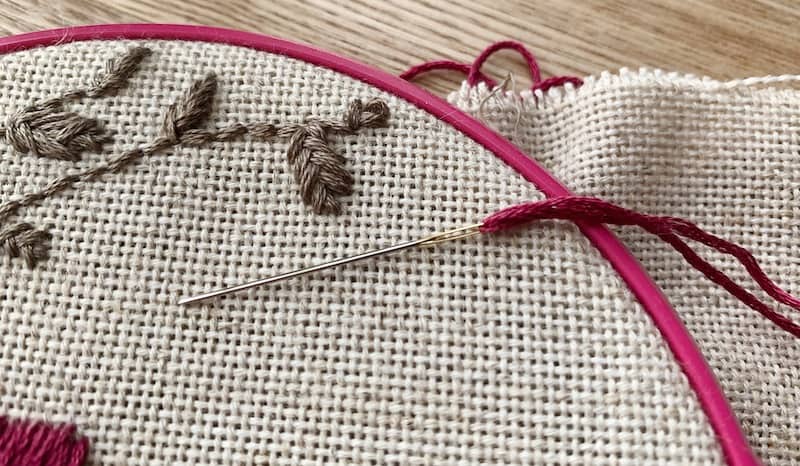
Embroidery is a specialized form of sewing, so it needs a special kind of needle. There are needles that are made specifically for hand sewing, and others that are designed for embroidery. It is important to know the difference.
Embroidery needles are different from hand sewing needles in two main ways:
- The eye of the needle is much larger in embroidery needles to allow you to thread bulky embroidery floss.
- The scarf, or the indentation that runs from the eye up the shaft of a needle, is a special shape on embroidery needles to put less strain on the floss.
Always examine these characteristics when buying a needle, and try to buy those that are labelled as embroidery needles.
3. Choose the right hoop
An embroidery hoop, or tambour hoop, is another essential embroidery item. An embroidery hoop keeps your fabric taught, allowing you to sew perfect embroidery without the fabric puckering or clamping.
The perfect embroidery hoop should make your life easier rather than harder. This means it should be comfortable to hold and make it easy for you to access your project and do your work.
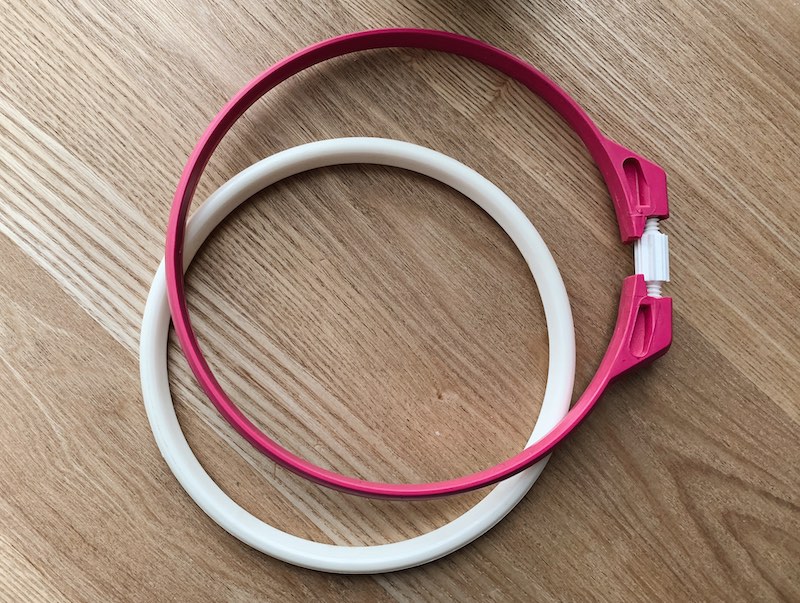
Although many embroiderers work without a hoop, most will agree this is the easiest way to create beautiful embroidery. That being said, it is important to choose the right hoop, and for this you need to know what to look for.
Here are some things to keep in mind when buying an embroidery hoop:
- Consider the material: embroidery hoops can be made of wood, plastic or metal. Generally, plastic or light wooden hoops such as birch are best to work with.
- Make sure the hoop has high-quality and durable brass fittings that allow you to tighten the hoop so that there is no gap between the inner and outer rings. When you tighten the screw fully, the brass fittings shouldn’t bend.
- Check the size of the hoop: you should be able to easily hold it in your palm, with your thumb along the side of the hoop and stretch your fingers to the middle of the hoop. For most people, a six or seven inch hoop will be ideal.
- You can bind one or both rings of your hoop with cotton twill tape to help it grip your fabric better and maintain the correct tension.
4. Pick the right stitch
Picking the right stitch can make all the difference between a beautiful finished project, and a piece of embroidery that is polished, but doesn’t look quite right.
If you are following a detailed pattern, the instructions should tell you which stitch to use. However, when creating your own design from a line drawing or similar, you’ll need to choose the right stitch for each section.
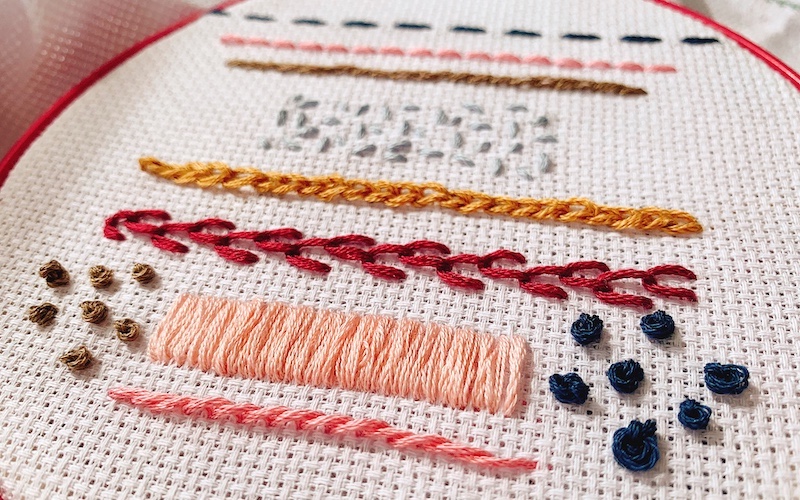
To be able to pick the right stitch, you need to have a solid vocabulary of at least the basic embroidery stitches, such as running stitch, backstitch, split stitch, and seed stitch. For detailed instructions on how to sew these and more essential stitches, check out these nine basic embroidery stitches and how to sew them.
Practicing these stitches until you are thoroughly familiar with each will help you to know which stitch to use in any situation. From there, you should start to experiment and try different stitches to see what works well and what falls flat.
Don’t be afraid to experiment and try out different stitches: this is the best way to get a feeling for how to pick the right stitch. Even more importantly, be willing to make mistakes: sometimes you need to fail completely along the way to achieve perfection! And if for some reason you don’t like the result, check out our tips on how to remove embroidery.
5. Get the correct scissors
Another important tool that can make all the difference to your embroidery is the right scissors. A high-quality pair of scissors is absolutely essential to making sure that your embroidery project turns out perfectly.
There are several different types of scissors that should be used in embroidery:
- Straight tip scissors, also known as embroidery scissors, are compact, with slender, very sharp blades and fine points. These fine points allow you to get close to the fabric for precise snips.
- Curved tip scissors are also small, but have slender blades that curve upwards at the tip. They are particularly handy for cutting close to the fabric while it is held taught in an embroidery hoop.
- Double curved scissors have tips that cut flush with the fabric and are perfect for precise cuts when working with a hoop. They are also available in spring-action models that are effortless to use.
- Hook-blade scissors have a specially shaped blade that can slide under a single stitch to cut close to the embroidery, allowing you to snip one stitch at a time from the reverse side.
- Steeple tip scissors have a blunt, slender tip that lets you slide the blade under your stitches without ripping the fabric.
- Bent handle scissors are designed so that the handle is raised above the embroidery while keeping the blade parallel to the stitches.
6. Choose the right fabric for your embroidery
Fabric choice can also make a world of difference when it comes to embroidery. The weight, in particular, is critical: you need to ensure that your fabric is heavy enough that it can support your design.
In this way, looser fabrics, or those with an open weave, are generally unsuitable for embroidery as they will not hold your embroidery stitches without warping or puckering the fabric. This is where the thread count comes in: a higher thread count indicates a closer weave.
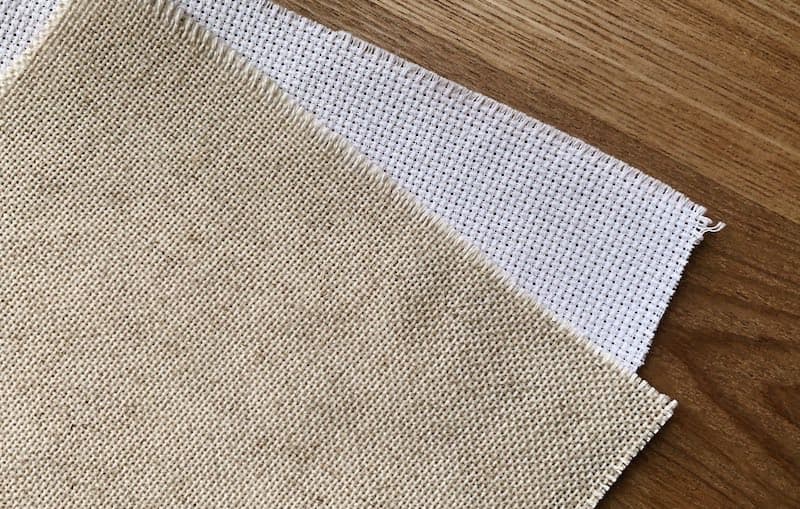
Heavier fabrics or those with a high thread count are more able to support an embroidery fabric, but it will be more difficult to pass a needle through these fabrics. On the other hand, it is easy to pull and needle and thread through a fabric with a low thread count, but this will also be unsuitable for supporting most embroidery designs.
You can use a range of fabrics for embroidery. The key point is to make sure that the fabric you choose is suitable for the design.
Generally speaking, a natural fabric with a tight weave, such as cotton or linen, provides a strong base for embroidery while being easy to work with.
7. Use a thread conditioner
Using a thread conditioner is absolutely essential if you want your embroidery designs to turn out well, and to continue to look flawless over time. A thread conditioner adds a protective barrier to the thread of embroidery floss, protecting it from dust, dirt and moisture, as well as UV, mold or mildew damage.
Another advantage of thread conditioner is that it reduces static electricity in the thread, which is one of the main reasons that threads tangle.
Good quality thread conditioners are made from synthetic polymers that have a consistency similar to beeswax. They are safe to use on textiles, protect the thread, and reduce “thread drag”, the force of continually pulling the thread through fabric which can wear both the thread and the fabric.
Using a thread conditioner on your embroidery floss will protect your floss and your fabric from damage while you work, and continue to protect your floss once you’ve finished the project.
8. Know your floss
We’ve already discussed how important it is to choose the right fabric, needle and hoop to produce the right results for your embroidery. There is one final element that is critically important when it comes to embroidery: the floss.
Embroidery floss, rather than thread, is used in embroidery. It is important to know the distinctions between sewing thread and embroidery floss in order to use it correctly.
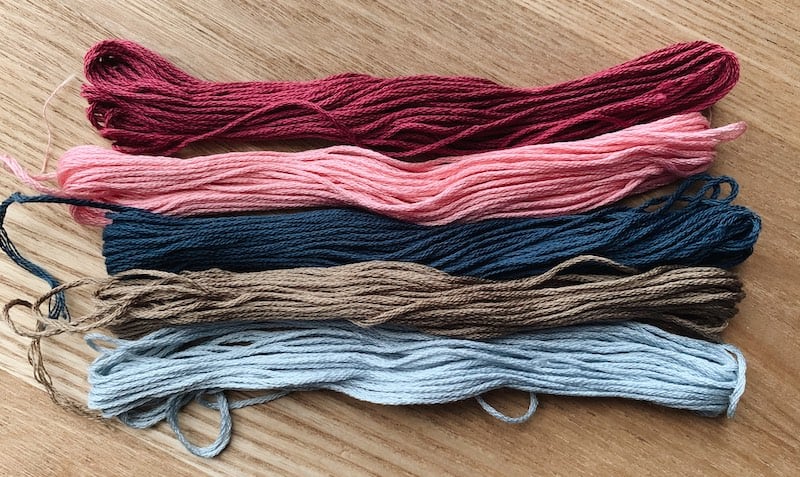
Embroidery floss typically has six strands, which should be separated out before you start stitching. Usually, two strands are used for embroidery, though this can vary depending on the design. Separating out each strand can be a little difficult, as there is a tendency for the skein to tangle if you simply pull on one strand.
The easiest way to neatly remove a strand from a skein of floss is to gently pull on one strand, holding it firmly with your thumb and forefinger. Then, rather than pulling on the single strand, pull the other strands down the length of the strand . They will fall off effortlessly, without tangling, and you’ll be left with your single strand.
9. Use a stabilizer
Stabilizer is another simple tool that will make all the difference to your embroidery projects. Using a stabilizer is not essential in all cases, but in many cases, it will make it easier for you to work and will greatly improve the final result.
Stabilizers should almost always be used when working with stretch fabrics, as this makes sure the embroidery design holds its shape. It is also useful for light or thin fabrics, stopping the back of the embroidery from being visible from the front.
Cut-away stabilizer is generally the best kind of stabilizer to use for machine and hand embroidery.
To use a stabilizer for embroidery, you can either baste the stabilizer on to the wrong side of the fabric or hold in place with your hoop. Cut away the excess stabilizer once you’ve finished stitching your design.
10. Organize your workspace
The space you work in is critically important. A well-organized workspace gives you room to work and helps to foster your creativity.
You do not need a large space in order to create beautiful embroidery, but it is important that everything has its place and everything is in its place. Being able to instantly locate the right needle or floss allows you to work more efficiently.
Keeping your floss well-organized also stops it from becoming tangled. Having to untangle a mess of embroidery floss can be time consuming and frustrating.
A great solution is to organize your floss on cardboard bobbins. Neatly wrap each skein of embroidery floss around a cardboard bobbin and then arrange your bobbins in an organizer box by color or floss type.
Lighting is another key factor: it is essential that you have enough light to see your stitching and keep it neat. Make sure that your workspace is well lit, whether with natural light, artificial light, or a combination of both.
A large window with natural light pouring in creates a practical and pleasant workspace. However, you also want to make sure you have sufficient lamps or lighting to allow you to work in the evening or on gloomy days. Investing in a magnifying glass with a built-in lamp is also an option to consider.
11. Invest in a course
Embroidery is a complex art: there is so much to learn, that it takes years to master the craft. Even though books and tutorials can help you to develop your skills, they will only get you so far.
An online course is an excellent way to dive into the world of embroidery and learn the basics of embroidery, or expand your skill set.
Platforms like Craftsy and Skillshare have a large range of affordable online courses, which you can do from the comfort of your own home and in your own time. For a comprehensive introductory course for beginners, we recommend Craftsy’s “Design It, Stitch It: Hand Embroidery” online course.
In this course, master embroidery teacher Jessica Marquez teaches you 25 different embroidery stitches and how to execute them properly. Starting with basic stitches like satin stitches and French knots, she moves on to trickier ones like fishbone, Cretan and bouillon.
She also covers essential embroidery skills, including stabilizing stretch knits, creating your own patterns, and three simple methods for transferring your embroidery designs to fabric.
Wrapping it all up
Once you get the hang of embroidery, the sky’s the limit! You can create any picture or design with a needle, floss, and a piece of fabric, limited only by your imagination.
Anyone can get started with embroidery, even if you have no hand sewing experience. However, knowing a few tricks of the trade will help ensure you have a seamless experience and create stunning embroidery projects.
If you’ve found these tips helpful, why not share them with other aspiring embroiderers on social media? Keep checking back to our blog for more tips on advice for budding sewists and crafters.

